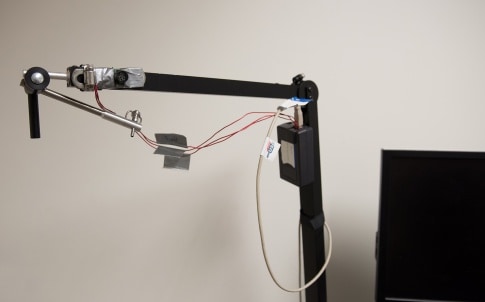The automated treadmill uses sonar to tell exactly where the runner is on the treadmill. The sonar is set up behind the treadmill and aimed at the runner’s back, just between the shoulder blades.
When the runner is in the middle of the running belt (measured from front to back), the speed of the treadmill stays the same. If the sonar senses that the runner is moving farther away, that means the runner is picking up speed and the sonar microcontroller sends a signal to the treadmill to speed up the belt in varying increments of speed. The speed increases until the runner returns to the middle of the belt.

“If you’re running outside and you want to speed up or slow down, there is no button to push. It is the same with this new automated treadmill,” said Steven T. Devor, associate professor of kinesiology at The Ohio State University.
The result is a treadmill experience that is much closer to walking or running outdoors, Devor said in a statement.
Ohio State recently filed a patent application on the treadmill, which is a finished prototype in Devor’s lab and is nearly ready for commercialisation.
Devor said the potential upside of the automated treadmill for athletes and anyone that uses a treadmill in a gym is obvious: when running or walking outside, people naturally speed up and slow down all the time without doing it consciously but with a regular treadmill, gym users have to manually adjust every change in speed.
“An automated treadmill makes the experience much more natural and you can just run without thinking of what pace you want to set,” he said.
The researchers developed the new setup using off-the-shelf products. They started with an inexpensive sonar range finder, which is used to measure the distance between an object and the sonar device. They attached it to a microcontroller and a computer, which was linked to the electronics in the treadmill.
Development of the prototype involved a degree of trial and error before the researchers got all the parts to work together flawlessly. In early versions, the belt would speed up and slow down unpredictably but now it works smoothly and reacts quickly enough for Cory Scheadler, an elite runner and former graduate student at Ohio State, to break into a fast sprint on the automated treadmill and not hit the front of the device.





Glasgow trial explores AR cues for autonomous road safety
They've ploughed into a few vulnerable road users in the past. Making that less likely will make it spectacularly easy to stop the traffic for...